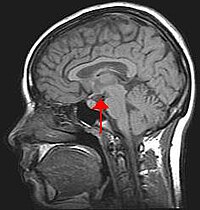
Dynamic CRMP2 Regulation of CaV2.2 in the Prefrontal Cortex Contributes to the Reinstatement of Cocaine Seeking
Sign Up to like & getrecommendations! Published in 2019 at "Molecular Neurobiology"
DOI: 10.1007/s12035-019-01711-9
Abstract: Cocaine addiction remains a major health concern with limited effective treatment options. A better understanding of mechanisms underlying relapse may help inform the development of new pharmacotherapies. Emerging evidence suggests that collapsin response mediator protein… read more here.
Keywords: crmp2; cocaine seeking; reinstatement cocaine; cocaine ... See more keywords

Intravenous administration of Tat-NR2B9c peptide, a PSD95 inhibitor, attenuates reinstatement of cocaine-seeking behavior in rats
Sign Up to like & getrecommendations! Published in 2021 at "Behavioural Brain Research"
DOI: 10.1016/j.bbr.2021.113537
Abstract: Cocaine use disorder is a serious, chronic and relapsing disease of the nervous system, for which effective treatments do not yet exist. Recently, the role of the N-methyl-d-aspartate (NMDA) receptor subunit GluN2B has been highlighted… read more here.
Keywords: psd95; seeking behavior; cocaine seeking; tat nr2b9c ... See more keywords

Opposing Regulation of Cocaine Seeking by Glutamate and GABA Neurons in the Ventral Pallidum
Sign Up to like & getrecommendations! Published in 2020 at "Cell reports"
DOI: 10.1016/j.celrep.2020.01.023
Abstract: SUMMARY Projections from the nucleus accumbens to the ventral pallidum (VP) regulate relapse in animal models of addiction. The VP contains GABAergic (VPGABA) and glutamatergic (VPGlu) neurons, and a subpopulation of GABAergic neurons co-express enkephalin… read more here.
Keywords: vpgaba; cocaine seeking; cocaine; vpglu neurons ... See more keywords

Chronic restraint stress during withdrawal increases vulnerability to drug priming-induced cocaine seeking via a dopamine D1-like receptor-mediated mechanism.
Sign Up to like & getrecommendations! Published in 2018 at "Drug and alcohol dependence"
DOI: 10.1016/j.drugalcdep.2018.03.024
Abstract: BACKGROUND A major obstacle in the treatment of individuals with cocaine addiction is their high propensity for relapse. Although the clinical scenario of acute stress-induced relapse has been well studied in animal models, few pre-clinical… read more here.
Keywords: cocaine seeking; stress; restraint stress; chronic restraint ... See more keywords

(-)-Stepholidine reduces cue-induced reinstatement of cocaine seeking and cocaine self-administration in rats.
Sign Up to like & getrecommendations! Published in 2018 at "Drug and alcohol dependence"
DOI: 10.1016/j.drugalcdep.2018.04.030
Abstract: BACKGROUND Dopamine receptors are implicated in cocaine reward and seeking. We hypothesize that (-)-stepholidine, a dopamine D1/D2/D3 multi-receptor agent, would be effective in reducing cocaine reward and seeking in an animal model. We investigated the… read more here.
Keywords: cue induced; cue; cocaine seeking; reinstatement cocaine ... See more keywords

DRD3-dependent plasticity within the VP drives subcircuit activity critical for cocaine seeking
Sign Up to like & getrecommendations! Published in 2021 at "Neuron"
DOI: 10.1016/j.neuron.2021.06.011
Abstract: The ventral pallidum (VP) is a key hub within the reward system that mediates drug-seeking behaviors. However, molecular and cellular adaptations within the VP following drug use are not fully elucidated. In this issue of… read more here.
Keywords: drd3 dependent; plasticity within; dependent plasticity; cocaine seeking ... See more keywords

Relapse to cocaine seeking in an invertebrate
Sign Up to like & getrecommendations! Published in 2017 at "Pharmacology Biochemistry and Behavior"
DOI: 10.1016/j.pbb.2017.04.008
Abstract: Abstract Addiction is characterised by cycles of compulsive drug taking, periods of abstinence and episodes of relapse. The extinction/reinstatement paradigm has been extensively used in rodents to model human relapse and explore underlying mechanisms and… read more here.
Keywords: preference; seeking invertebrate; cocaine seeking; relapse ... See more keywords

Dopamine D3 receptor partial agonist LS-3-134 attenuates cocaine-motivated behaviors
Sign Up to like & getrecommendations! Published in 2018 at "Pharmacology Biochemistry and Behavior"
DOI: 10.1016/j.pbb.2018.10.002
Abstract: Aims: The dopamine D3 receptor (D3R) is a pharmacotherapeutic target for drug dependence. We have successfully imaged human D3Rs using radiolabeled LS‐3–134, an arylamide phenylpiperazine with moderate selectivity for the D3R over D2R and low… read more here.
Keywords: schedule; effects 134; cocaine seeking; dopamine receptor ... See more keywords

Cocaine-seeking behaviour is differentially expressed in male and female mice exposed to maternal separation and is associated with alterations in AMPA receptors subunits in the medial prefrontal cortex.
Sign Up to like & getrecommendations! Published in 2021 at "Progress in Neuro-Psychopharmacology and Biological Psychiatry"
DOI: 10.1016/j.pnpbp.2021.110262
Abstract: According with clinical data, women evolve differently from drug use to drug abuse. Among drugs of abuse, cocaine is the most consumed psychostimulant. Animal studies demonstrated that females show increased motivation to seek cocaine during… read more here.
Keywords: cocaine seeking; medial prefrontal; mice; cocaine ... See more keywords

Lateral Habenula Involvement in Impulsive Cocaine Seeking
Sign Up to like & getrecommendations! Published in 2017 at "Neuropsychopharmacology"
DOI: 10.1038/npp.2016.286
Abstract: The lateral habenula (LHb) is a brain structure receiving inputs from limbic forebrain areas and innervating major midbrain monoaminergic nuclei. Evidence indicates LHb involvement in sleep control, reward-based decision making, avoidance of punishment, and responses… read more here.
Keywords: lhb; cocaine seeking; drug; cocaine ... See more keywords

Dynorphin Counteracts Orexin in the Paraventricular Nucleus of the Thalamus: Cellular and Behavioral Evidence
Sign Up to like & getrecommendations! Published in 2018 at "Neuropsychopharmacology"
DOI: 10.1038/npp.2017.250
Abstract: The orexin (Orx) system plays a critical role in drug addiction and reward-related behaviors. The dynorphin (Dyn) system promotes depressive-like behavior and plays a key role in the aversive effects of stress. Orx and Dyn… read more here.
Keywords: cocaine; paraventricular nucleus; nucleus thalamus; cocaine seeking ... See more keywords